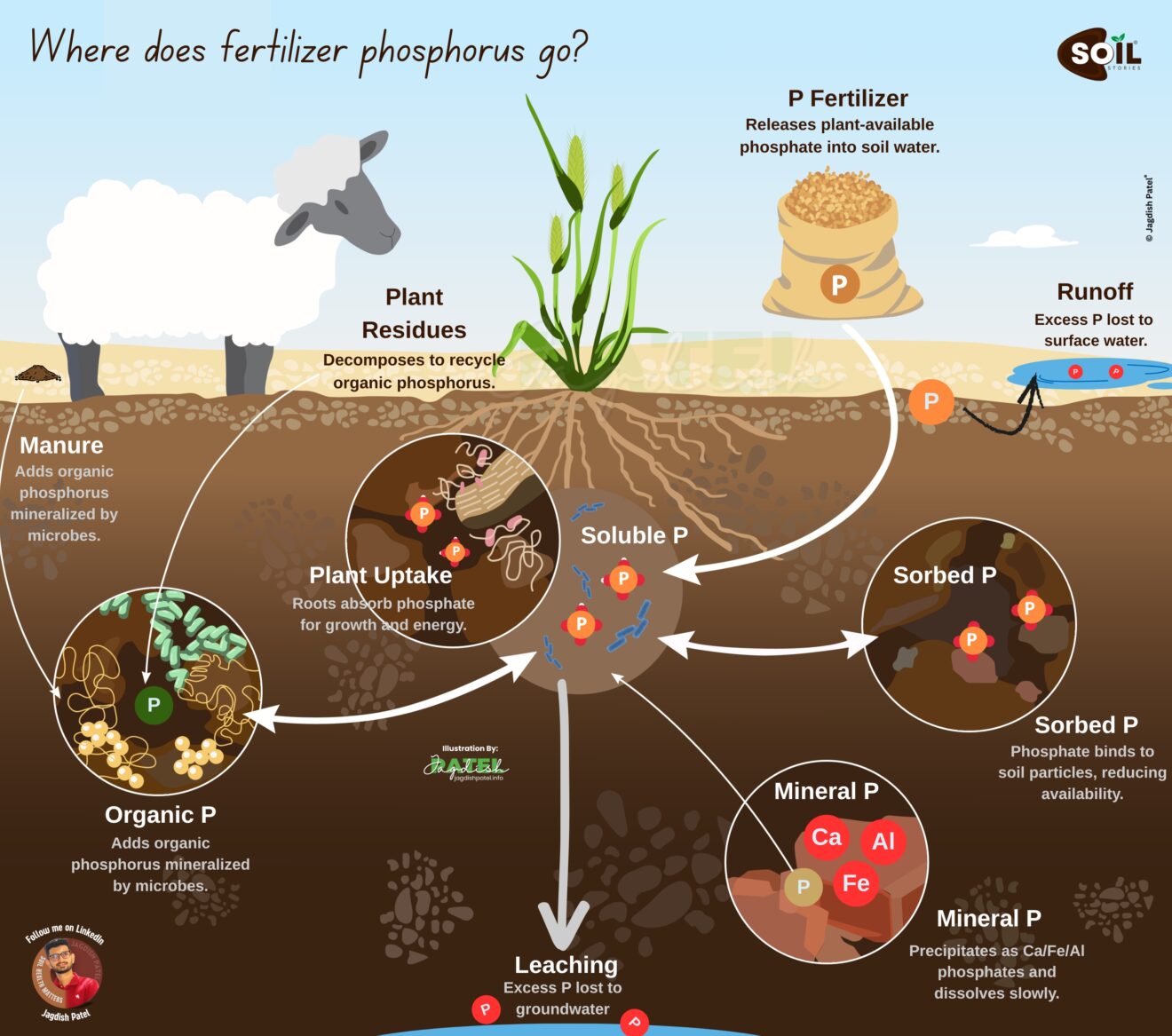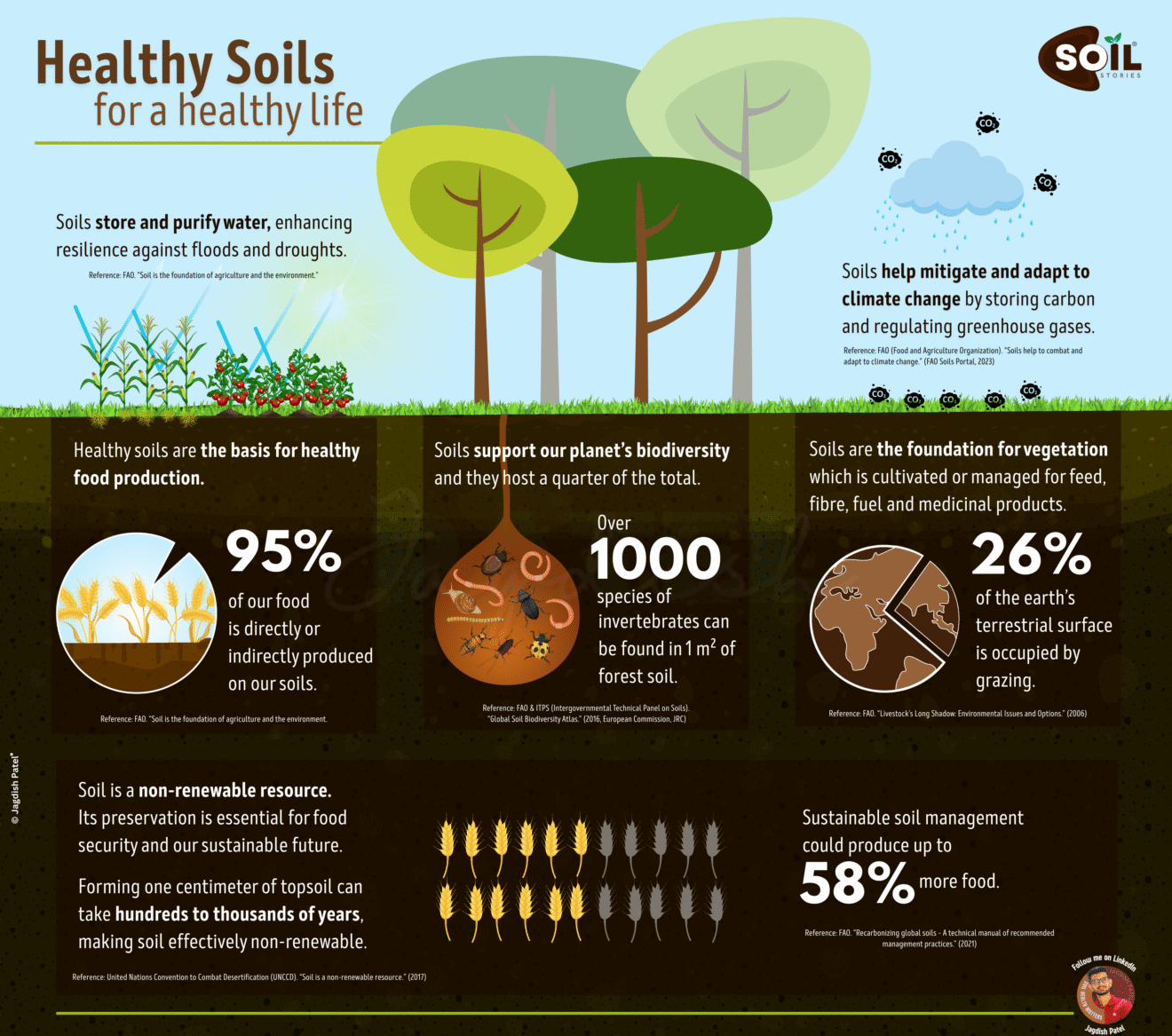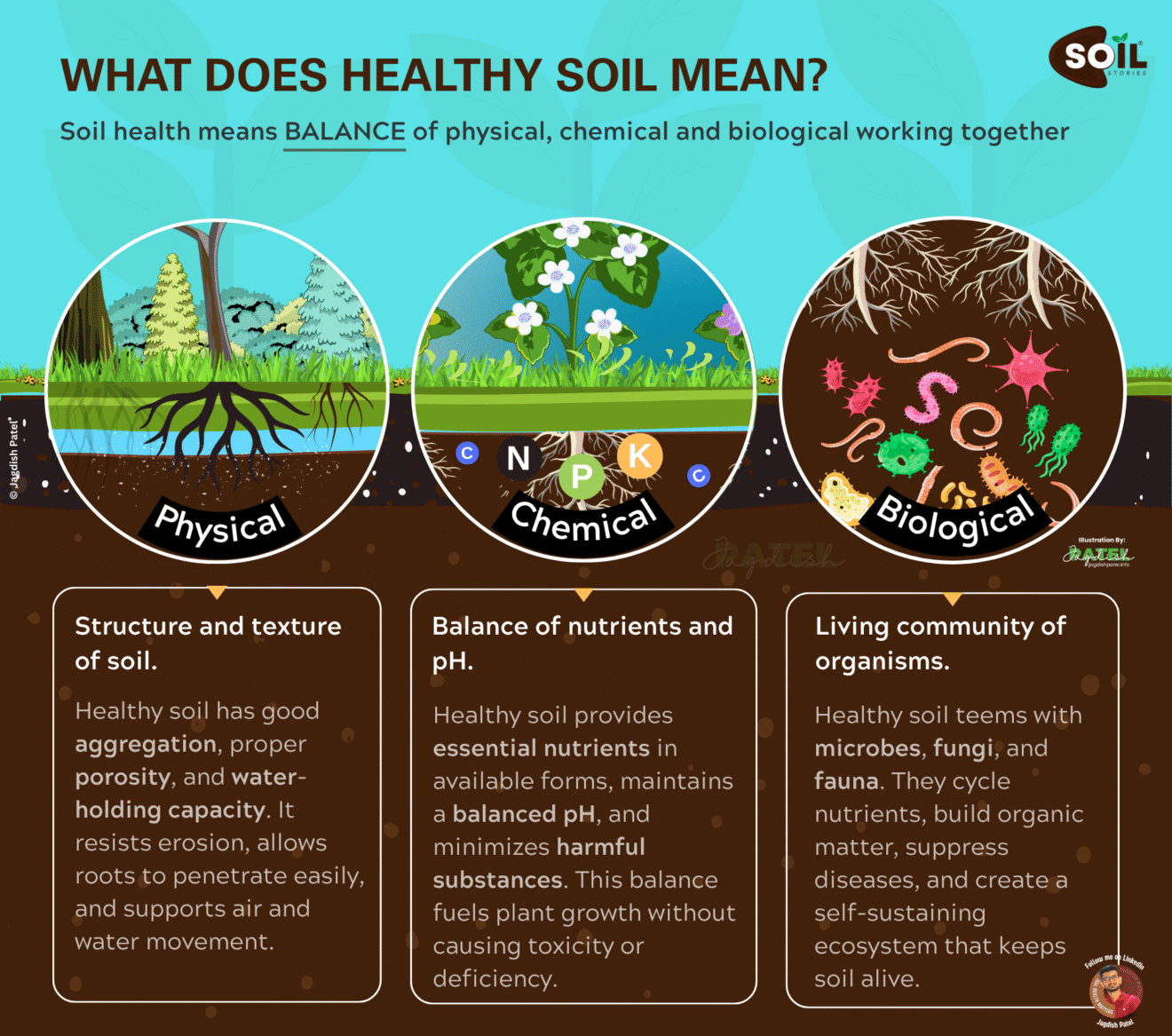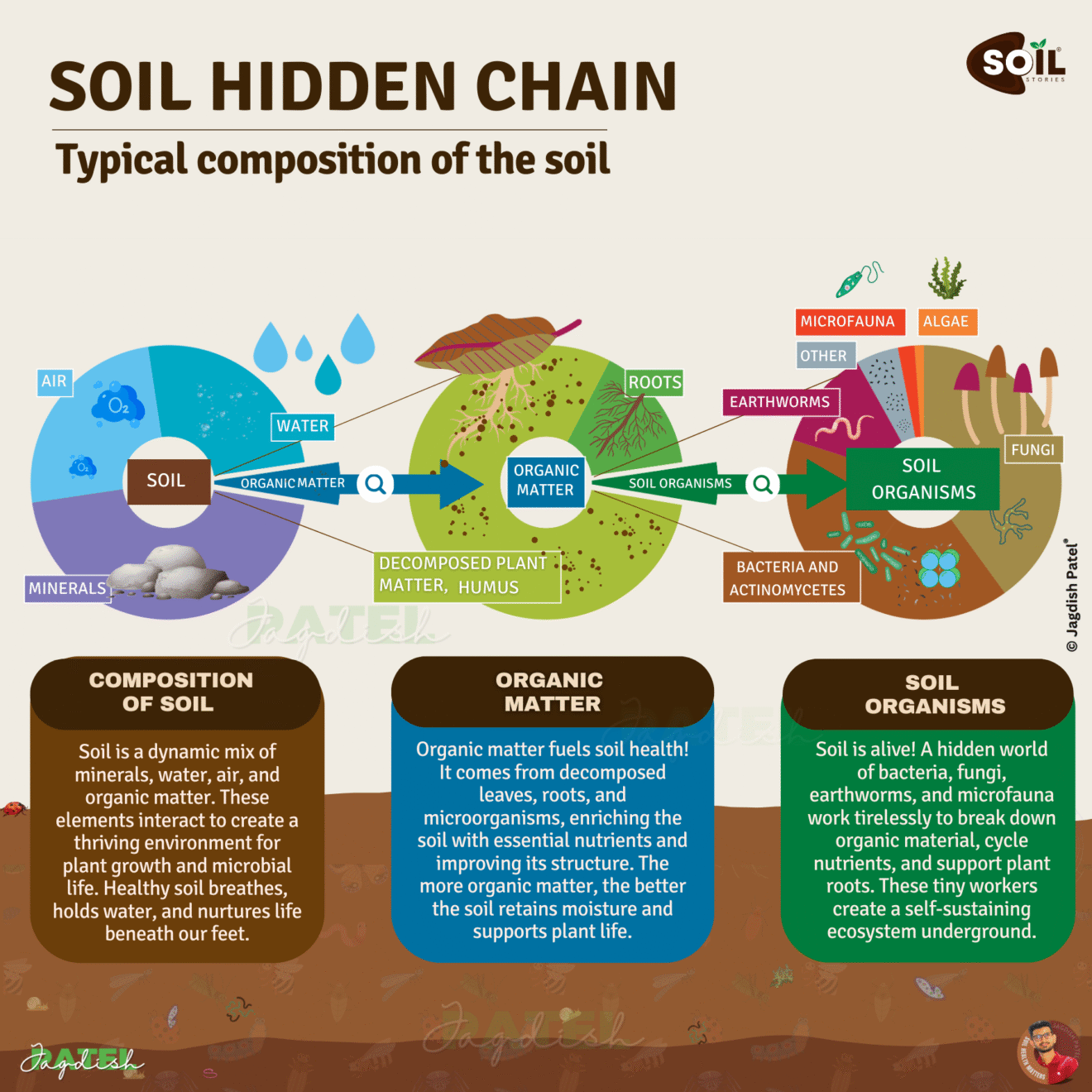Soil microbes are the unseen drivers of modern agriculture. While lush leaves and strong stems grab our attention, it’s the thriving microbial life underground that quietly powers plant health, nutrient availability, and soil structure. These tiny organisms are transforming how we think about farming, turning the focus from inputs to living systems.
As a soil health scientist and illustrator, I’ve spent years studying and visualizing the unseen life beneath our feet. For me, a truly productive farm is more than what meets the eye. The real story of agriculture starts not above ground with green leaves and full harvests, but down in the soil, where an entire microscopic world is constantly at work.
Unlocking the Power of Soil Health
Soil isn’t just dirt. It’s a dynamic, living ecosystem filled with bacteria, fungi, and other organisms that play a crucial role in plant growth. When we nurture this living soil, we unlock a level of vitality that no chemical input alone can match. That’s the promise and power behind building real #SoilHealth.
Some of the most important players in this underground network are beneficial microbes. Species like Bacillus, Trichoderma, and Mycorrhizae might be tiny, but their impact is enormous. They help plants access nutrients, build resilience, and create a soil environment that can thrive year after year.

Beyond Chemistry: The Rise of Biological Fertilizers
Traditional farming has relied heavily on chemical fertilizers, which can provide quick boosts to yield but often come with hidden costs to soil structure and biodiversity. Today, a new generation of products is changing the landscape with #BiologicalFertilizers.
These aren’t your average inputs. By harnessing naturally occurring microbes, modern biological fertilizers bring intelligence and efficiency to crop nutrition.
Take Bacillus, for example. These bacteria can solubilize phosphorus, making it available to plants when and where it’s needed most. Trichoderma fungi are well-known for protecting roots from disease, while Mycorrhizae form symbiotic relationships with plants to expand root networks and boost water and nutrient uptake.
With advances like encapsulation and controlled-release technology, we can now deliver these beneficial microbes directly to the rhizosphere, the hotspot around plant roots, right where they have the biggest impact.
Farm Profitability: Why Biology Means Better Business
The benefits of adding biology to the farm go far beyond sustainability. They show up in the numbers. Growers who use microbial inputs often see stronger root systems, more consistent yields, and improved resistance to stress and disease. When soil life is thriving, fertilizer efficiency increases and less input is wasted.
It all adds up to better #FarmProfitability:
- Higher yields per acre
- Lower fertilizer costs
- Reduced need for pesticides
- More stable production, even in tough seasons
And the best part? The soil improves with each passing year, rather than becoming depleted or dependent on ever-higher doses of chemicals.
Sustainable Farming: Working with Nature, Not Against It
Nature designed plants and microbes to work together. Through root exudates, natural compounds released by plant roots, plants recruit the microbial partners they need. In a truly healthy system, these relationships are self-sustaining and regenerative.
Our role as farmers, agronomists, and agricultural innovators is to support these natural partnerships, not disrupt them. When we use biological fertilizers alongside modern science and careful management, we get the best of both worlds: productivity and resilience.
That’s the core of #SustainableFarming, using our knowledge to nurture systems that last.
More Than Just Three Microbes
While Bacillus, Trichoderma, and Mycorrhizae are well-known, they’re just the tip of the iceberg. There are countless other species working quietly underground, each contributing something unique to soil fertility and crop performance. The more we learn about these living networks, the better we can support the health of our fields and the future of agriculture.
The Future Is Alive
As agriculture faces challenges from climate change, resource limits, and changing markets, the answer isn’t just more inputs. It’s smarter, more adaptive systems rooted in biology.
By embracing the power of soil microbes, we’re not just growing plants. We’re growing a living legacy beneath every field.
So the next time you walk your land or plan your crop inputs, remember this. The real workhorses might be under your boots, quietly making your farm healthier, more profitable, and more sustainable with every passing day.
If you found this exploration of soil microbes inspiring, you might also enjoy my guide on Unleashing the Power of Soil Health: EC and CEC. In that illustrated article, I dive deep into how electrical conductivity and cation exchange capacity influence soil’s ability to support plant growth, especially when combined with microbial partnerships and sustainable practices.Let’s stay connected
For more insights on soil biology, sustainable farming, and visual science communication, feel free to connect with me on LinkedIn.




